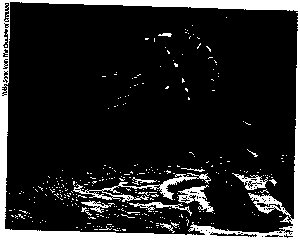| 52 |
Evolution | Natural History 12/98 -1/99 |
(THE REPLY, continued from
page 48)
million years) that paleontologists call this episode the Cambrian
explosion? The Burgess Shale, in the Canadian Rockies, contains the world's
most important fossil fauna--a detailed and exquisite record (with rarely
preserved soft parts included) of marine life about 520 million years ago, just
following the Cambrian explosion and therefore permitting us to census the results
of this seminal episode in the history of animal life on earth. Charles
D. Walcott, a great American paleontologist, discovered the Burgess Shale early
in our century but failed to appreciate its full significance. Beginning in the
1960s, Cambridge University paleontologist Harry Whittington, in eventual partnership
with two remarkable graduate students, Derek Briggs and Simon Conway Morris, restudied
Walcott's extensive collection in conjunction with new material from their own
fieldwork and developed a novel interpretation with profound implications for
our understanding of evolution and the history of life. I told the story, following
their views of the Burgess fauna quite strictly (while presenting my own best
judgment about larger implications), in my book Wonderful Life. Simon Conway
Morris (who has since rejected his original interpretation and reached a nearly
opposite conclusion--in general, an admirable stance for a scientist, although
in this particular case, I think that Conway Morris was right the first time around)
recently challenged my reading in The Crucible of Creation, the impetus
for this dialogue.Interpreting the fauna of the Cambrian explosion
raises two deep and distinct issues, often confused in Conway Morris's commentary
but providing a good framework for exemplifying our differences. First, a question
of origins: How could so much anatomical variety evolve so quickly? In particular,
must novel evolutionary mechanisms be proposed for such a burst of activity? Second,
a question of consequences: How many distinct lineages arose in the Cambrian explosion?
How many survived to leave modern organisms as descendants? Why have no new animal
phyla (with the single exception of Bryozoa) evolved in more than 500 million
years since the Cambrian explosion? Did surviving lineages prevail for predictable
reasons of superior biomechanical design or ecological adaptation?. Or did nature
(to speak metaphorically) play a grand lottery with this initial diversity; issuing
just a few winning tickets effectively at random--thus implying that modem
groups, including our own lineage of vertebrates, owe their current success to
an initial luck of the draw, combined with good fortune along the meandering paths
of history's later contingencies?The question of origins: I
devoted only a few pages to this fascinating topic in Wonderful Life because
so little meaningful evidence exists, and fruitful science must be defined by
palpable and potentially decisive data, not by our subjective sense of intrigue
or importance. (For this reason, questions about intelligent extraterrestrial
life remain scientifically vacuous, although no issue could be more important
in principle.)IN
LESS THAN 20 MILLIONYEARS,
ALL MAJOR MARINE INVERTEBRATE PHYLA EVOLVED....
HOW CAN THIS NOT BE SEEN AS A UNIQUE TIME OF EXPLOSIVE AND UNPARALLELED DIVERSIFICATION? |  | This
Burgess Shale scene features the predator Anomalocaris, which has captured a trilobite.
On the seafloor are a Wiwaxia (far left) and, among others, three Hallucigenia
(center). |
As
a framework for tackling the puzzle of why so much anatomical variety arose so
rapidly at this unique time, I suggested that two basic approaches should be explored
(with a full answer undoubtedly requiring a balance of both). An "external,"
or ecological, perspective would focus upon the uniquely "empty" ecological
barrel of potential environments for mobile multicellular animals at the dawn
of Cambrian time; almost any "experiment" might work for a while during
an initial "filling"--at least until Darwinian forces sorted the
workable from the suboptimal and placed a brake upon subsequent change of such
magnitude. By contrast, an "internal" genetic or developmental perspective
might view the Cambrian as a time of unique flexibility, before definite patterns
of growth from egg to adult became so locked into the embryology of complex organisms
that fundamental reconstructions became nearly impossible.I suggested
in Wonderful Life (and still maintain) that scientists should devote more
attention to the unconventional internal arguments than to the more familiar ecological
claims. I propose no bizarre or novel evolutionary mechanisms but only emphasized
a potentially greater efficacy for ordinary processes at a unique time of organic
flexibility, before major developmental pathways became irrevocably set. I therefore
feel that Conway Morris has mis- |